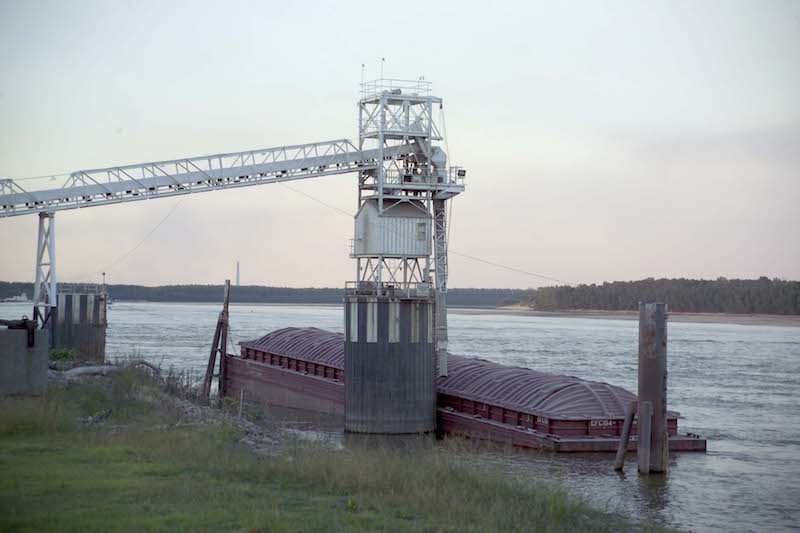Concern grows over low water on the inland waterways (guest author)
View Source

A soybean barge at a grain elevator in the Midwest. United Soybean Board photo
As if agricultural shippers did not have enough supply chain challenges to occupy multiple lifetimes, there is growing concern over diminished water levels along the inland waterway system that will impact barge transportation. This will become more acute as we increasingly enter harvest season.
 Mike Steenhoek
Mike SteenhoekDue to the scarcity of precipitation throughout the year, the water depth along our navigable waterways is limiting the efficiency of barge transportation in two ways — channel depth and channel width. Currently, the area of particular concern is the Mississippi River south of St. Louis.
Barge companies are having to load barges lighter in order to prevent groundings, which have already occurred and are a growing concern. A typical barge can be loaded with 1,500 short tons of freight (50,000 bushels of soybeans). A 15-barge tow can therefore easily accommodate 750,000 bushels of soybeans. Each reduced foot of water depth (i.e. draft) will result in 150-200 fewer short tons (5,000-6,700 bushels of soybeans) being loaded per barge.
Let’s assume a soybean-growing region will need to transport 100 million bushels of soybeans via barge. Under normal conditions, 100 million bushels divided by 750,000 bushels per 15-barge tow equals 133 barge tows. If the water level for loading is decreased by one foot and if you utilize the conservative 150 fewer short tons (5,000 fewer bushels) per load, the 15-barge tow will be loaded with 75,000 fewer bushels. This is the equivalent of removing the entire production of three soybean farms from a single barge tow (500 acres of soybeans per farm times 50 bushels an acre equals 25,000 bushels). Under this scenario, 148 barge tows will be required (100 million divided by 675,000 bushels per 15-barge tow).
Unfortunately, precipitation over the next month is expected to be limited — further exacerbating the shipping challenges. When combined with an overall supply chain under stress, agricultural shippers are expecting some difficulties in getting soybeans and grain to market. Fortunately, we have the most productive farmers on the planet and an infrastructure that, despite these challenges, remains the envy of other soybean and grain producing countries.
But the current and expected conditions along the Mississippi River are clearly a reason for concern.
Mike Steenhoek is the executive director of the Soy Transportation Coalition, Ankeny, Iowa.

